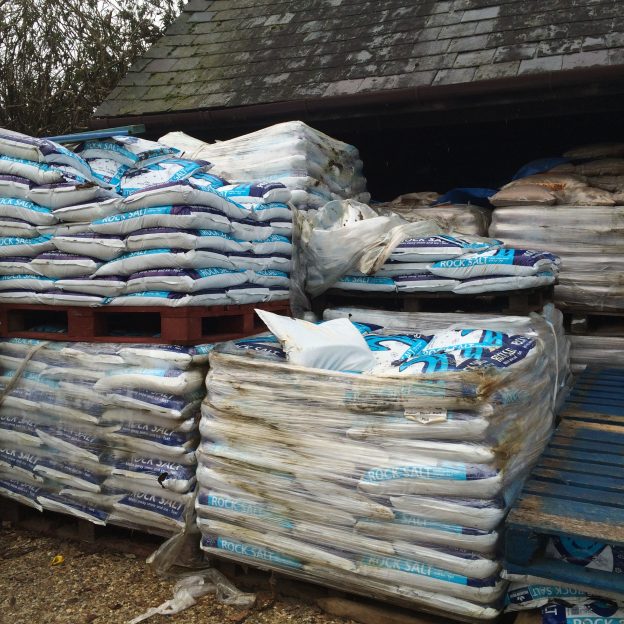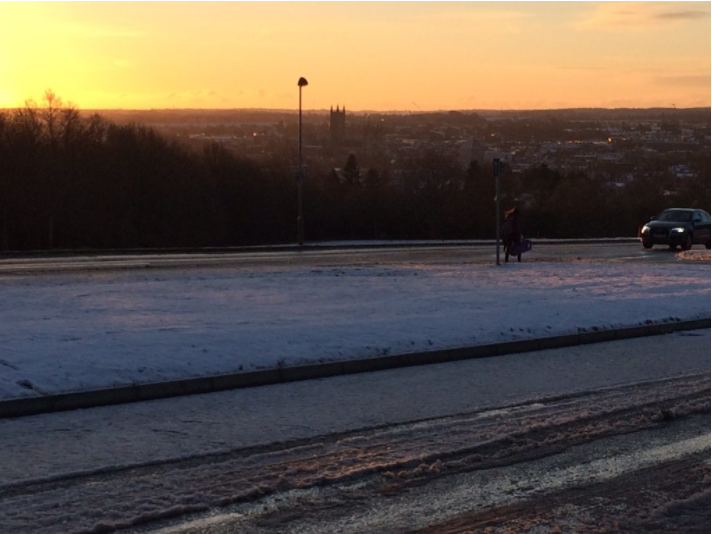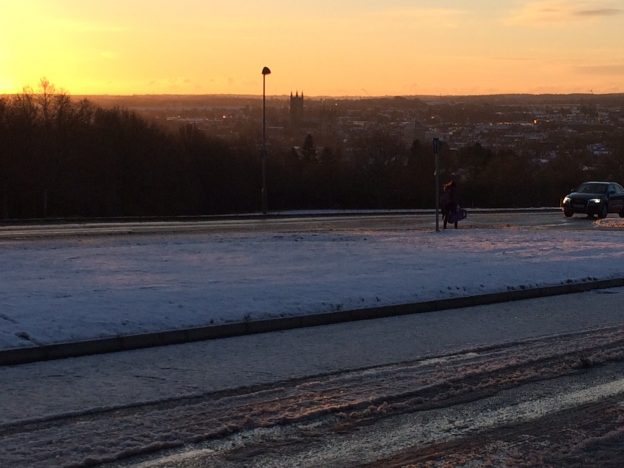The University of Kent’s Landscape Management team are always up early and working hard to keep the campus safe and serviceable for all. During icy weather, they grit the campus roads and footpaths to reduce the risk of accidents to staff, students, and visitors.
What many people do not realise is, there is a fine art to gritting. Timing is everything. If you go too early, you waste the grit, because it lands on a dry road and is blown away by the displaced air as vehicles drive past. If it is raining heavily then it just washes away. Ideally the grit goes down on a damp surface and starts to stick, but if you are too late the surface is already frozen and the salt has to work harder to be effective but it will prevent big sheets of ice forming.
The salt is hygroscopic which means that it attracts moisture from the air and it only becomes activated when it is ‘trafficked’. When the grit is driven over the salt grinds down and mixes with the moisture it attracts and becomes the ideal brine, a salty water, which is when it is most effective.
Similar to how local authorities manage gritting, the Estates department will grit all University of Kent roads and main footpaths before starting on other areas across the campuses. Further information on the prioritised primary routes can be found on Goggle Maps.
For more information see the University’s Snow and Ice Policy.


